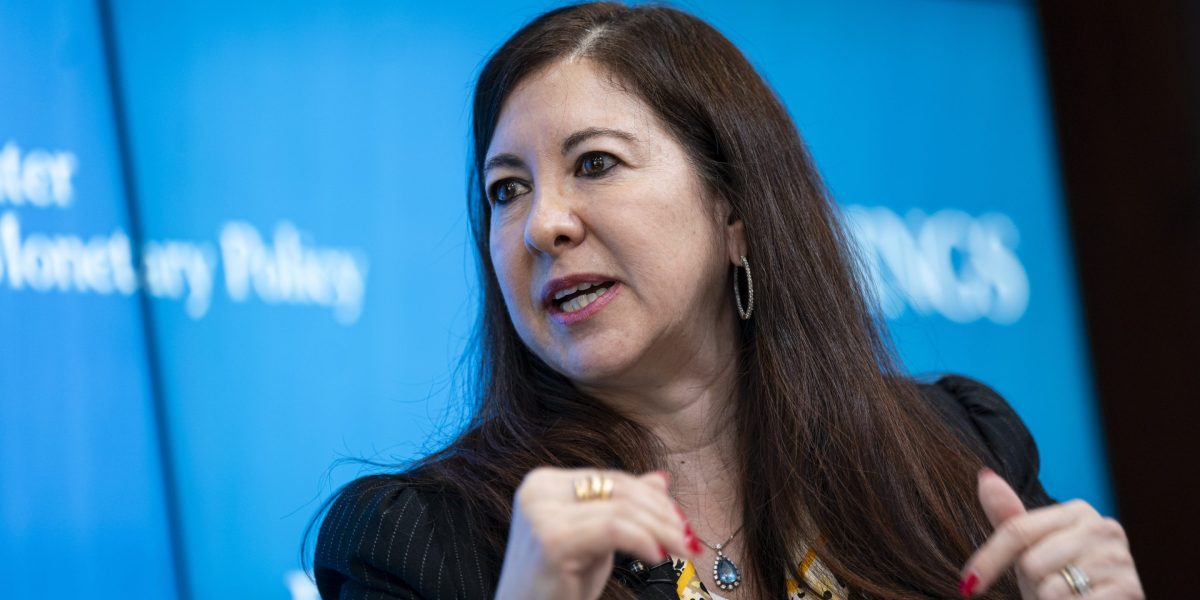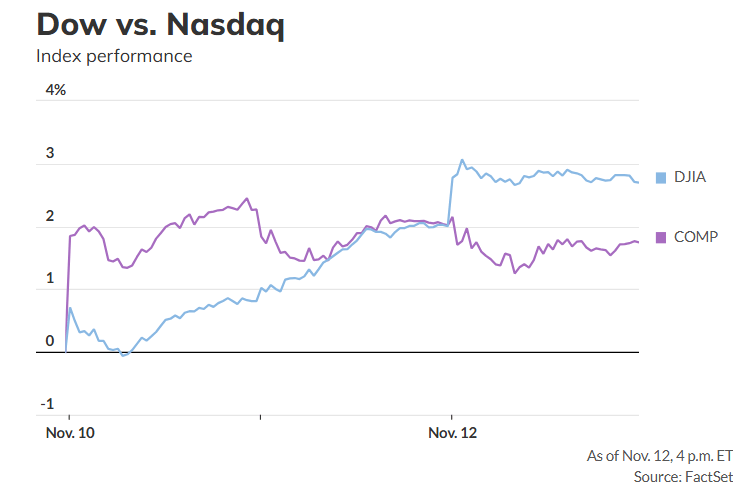Banks and money managers are trading more derivatives that offer payouts if individual tech companies, known as hyperscalers, default on their debt. Demand for credit protection has more than doubled the cost of credit derivatives on Oracle Corp.’s bonds since September. Meanwhile, trading volume for credit default swaps tied to the company jumped to about $4.2 billion over the six weeks ended Nov. 7, according to Barclays Plc credit strategist Jigar Patel. That’s up from less than $200 million in the same period last year.
“We’re seeing renewed interest from clients in single-name CDS discussions, which had waned in recent years,” said John Servidea, global co-head of investment-grade finance at JPMorgan Chase & Co. “Hyperscalers are highly rated, but they’ve really grown as borrowers and people have more exposure, so naturally there is more client dialogue on hedging.”
Tech companies are borrowing billions for artificial intelligence. Lenders are now seeking protection against potential defaults. Derivatives trading on companies like Oracle and Meta Platforms has surged. This indicates a shift in capital markets as AI drives massive investment and borrowing. Investors are hedging their exposure to this evolving landscape.
A representative for Oracle declined to comment.Trading activity is still small compared with the amount of debt that is expected to flood the market, traders said. But the growing demand for hedging is a sign of how tech companies are coming to dominate capital markets as they look to reshape the world economy with artificial intelligence.
Investment-grade companies could sell around $1.5 trillion of bonds in the coming years, according to JPMorgan strategists. A series of big bond sales tied to AI have hit the market in recent weeks, including Meta Platforms Inc. selling $30 billion of notes in late October, the biggest corporate issue of the year in the US, and Oracle offering $18 billion in September.Tech companies, utilities, and other borrowers tied to AI are now the biggest part of the investment-grade market, a report last month from JPMorgan shows. They’ve displaced banks, which were long the biggest portion. Junk bonds and other major debt markets will see a wave of borrowing too, as firms build thousands of data centres globally.Some of the biggest buyers of single-name credit default swaps on tech companies now are banks, which have seen their exposure to tech companies surge in recent months, traders said.
Another source of demand for the derivatives: equity investors looking for a relatively cheap hedge against the shares dropping. Buying protection on Friday against Oracle defaulting within the next five years costs about 1.03 percentage points, according to data provider ICE Data Services, or around $103,000 a year for every $10 million of bond principal protected. In contrast, buying a put on Oracle’s shares falling almost 20% by the end of next year might cost about $2,196 per 100 shares as of Friday, amounting to about 9.9% of the value of the shares protected.
There is a good reason for money managers and lenders to at least look at cutting exposure now: An MIT initiative this year released a report indicating that 95% of organisations are getting zero return from generative AI projects. While some of the biggest borrowers now are companies with high cash flow, the technology industry has long been fast-changing. Firms that were once big players, such as Digital Equipment Corp., can fade into obsolescence. Bonds that seem safe now may prove to be considerably riskier over time or even default, if profits from data centres fall short of companies’ current expectations, for example.
Credit default swaps tied to Meta Platforms Inc. began actively trading for the first time late last month, after its jumbo bond sale. Derivatives tied to CoreWeave have also started trading more actively. Its shares tumbled on Monday after the provider of AI computing power lowered its annual revenue forecast due to a delay in fulfilling a customer contract.
In the years before the financial crisis, the high-grade single-name credit derivatives market saw more volume than today, as proprietary traders at banks, hedge funds, bank loan book managers, and others used the products to cut or boost their risk. After the demise of Lehman, trading volume in single-name credit derivatives dropped, and market participants say it’s unlikely it will return to pre-financial levels. There are more hedging instruments now, including corporate bond exchange-traded funds, plus the credit markets themselves have become more liquid as more bonds trade electronically.
Click here for a podcast with Oaktree about the lack of discipline in the AI rush
Sal Naro, chief investment officer of Coherence Credit Strategies, sees the recent increase in single-name CDS trading as temporary. His hedge fund has $700 million in assets under management.
“There’s a blip in the CDS market right now because of the data centre build-out,” said Naro. “Nothing would make me happier than to see the CDS market truly be revived.”
But for now, activity is on the rise, traders and strategists at banks said. The overall volume for credit derivatives tied to individual companies has increased by about 6% over the six weeks ended Nov. 7, to about $93 billion, from the same period a year ago, according to Barclays’ Patel, who analysed the latest trade repository data.
“Activity has picked up,” Dominique Toublan, head of US credit strategy at Barclays, said in an interview. “There’s definitely more interest.”





















